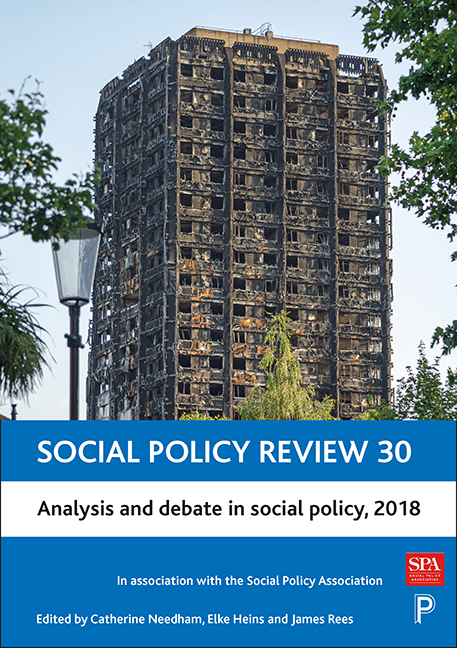Eleven - Back to the future of community cohesion? Learning from New Labour
Published online by Cambridge University Press: 22 April 2022
Summary
Introduction
New Labour embarked on an ambitious social project that sought to unite disparate social groups through mechanisms such as integration, social inclusion and the empowerment of different groups and ‘communities’. A specific element of this was community cohesion policy. Designed in response to so-called race riots in northern England in 2001, community cohesion aimed to improve relations and contact between, primarily, ethnic communities that had been charged with leading parallel lives (Home Office, 2001a, b). Although its main focus was race relations (McGhee, 2003; Worley, 2005; Cheong et al, 2007), it emphasised among other things the virtues of paid work, not only as the best route out of poverty but also as a method of integrating into one's community-at-large (Lister, 2003, p 428; DWP, 2006, p 2; DCLG, 2007; Hulse and Stone, 2007, p 114). Thus its aim was to smooth tensions between multiple different social groups.
The current period has exhibited multiple instabilities that suggest community cohesion may be able to provide some lessons on dealing with such tensions – both in terms of what to do and what not to do – in times of relative uncertainty. Social cohesion, for example, has been linked to Theresa May's shared society, but also as a potential solution to preventing radicalisation and acts of terror. Yet running parallel to this are social divisions emphasised and exacerbated by the European Union (EU) referendum vote, discussions on the meaning and role of Britishness, and a heightened sense of inequality both in terms of income and power that has on more than one occasion manifested itself in anger on the streets. Community cohesion was designed to address these issues. What does the continued presence of these issues say about the success of community cohesion? Importantly, can we draw lessons about what to do, and what not to do, when it comes to building cohesion?
This chapter reappraises community cohesion in light of the current political, social and economic landscape. It draws on published work (see Donoghue, 2013, 2014, 2016) based on critical discourse analysis (CDA) of UK welfare reform and community cohesion policy documents from 2001–10, and a series of focus groups conducted in Bradford and Birmingham in 2012 that investigated everyday perceptions and understandings of community, cohesion and welfare. A number of implications of these findings are contrasted with recent events.
- Type
- Chapter
- Information
- Social Policy Review 30Analysis and Debate in Social Policy, 2018, pp. 229 - 248Publisher: Bristol University PressPrint publication year: 2018

